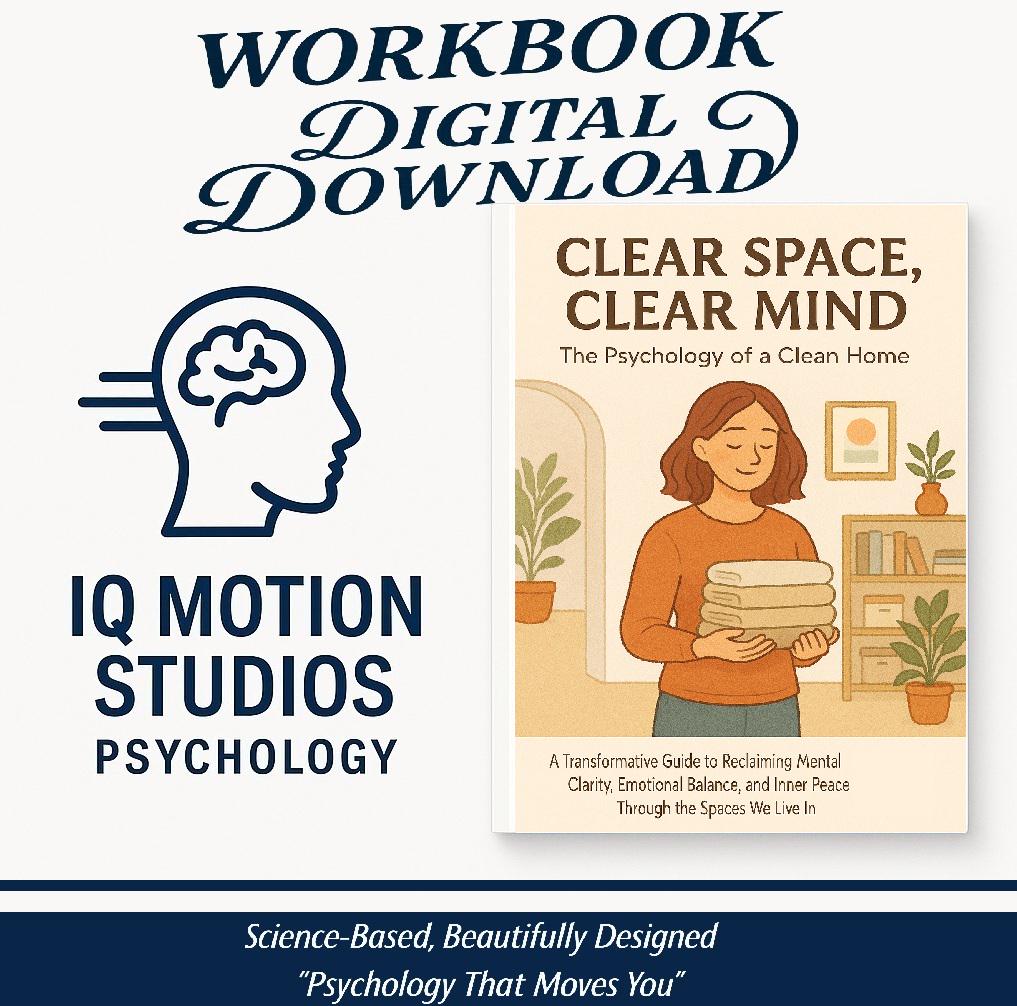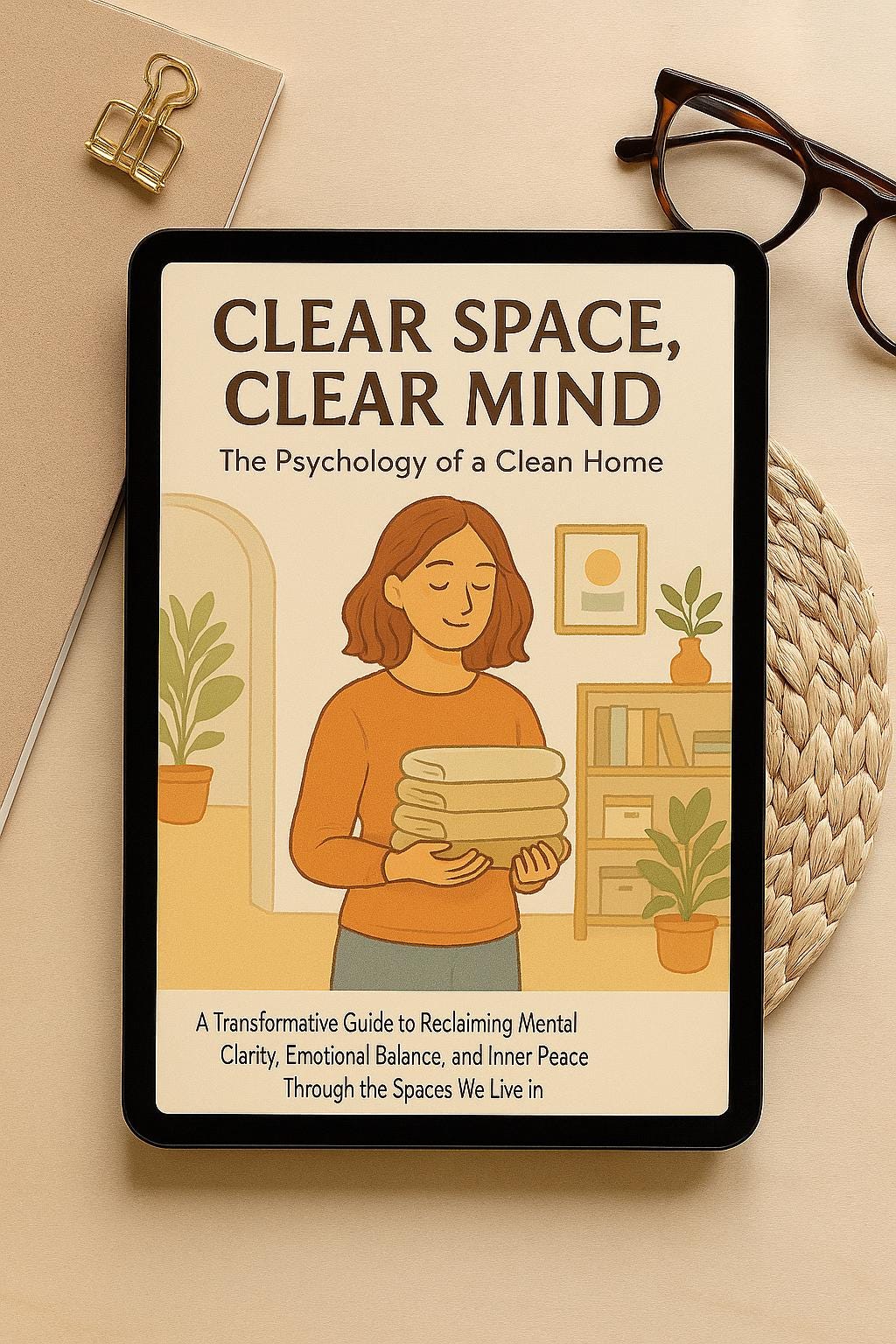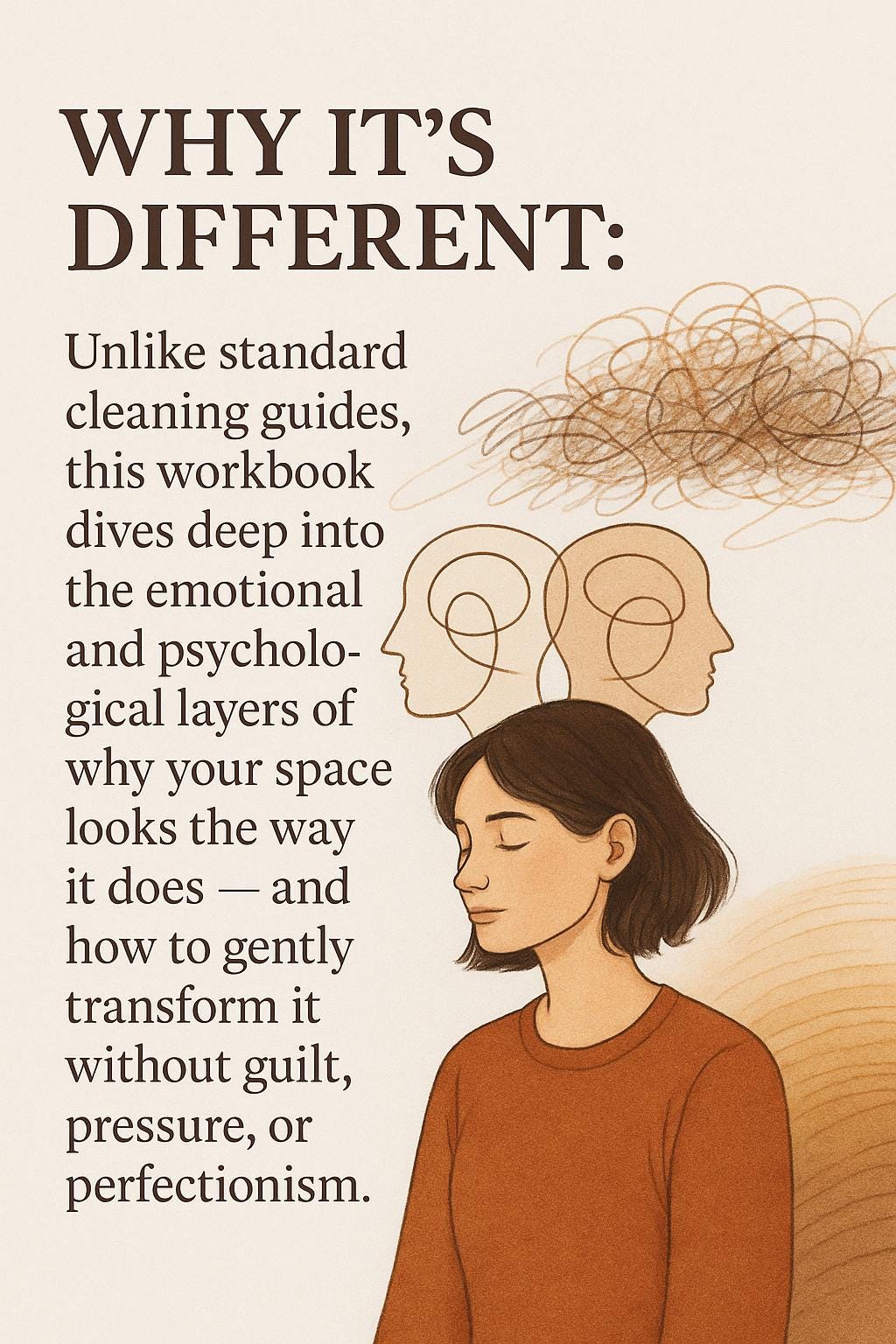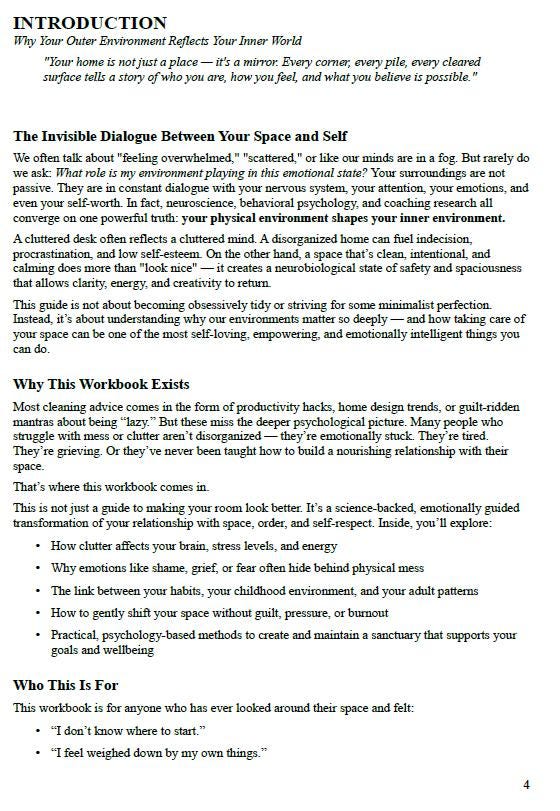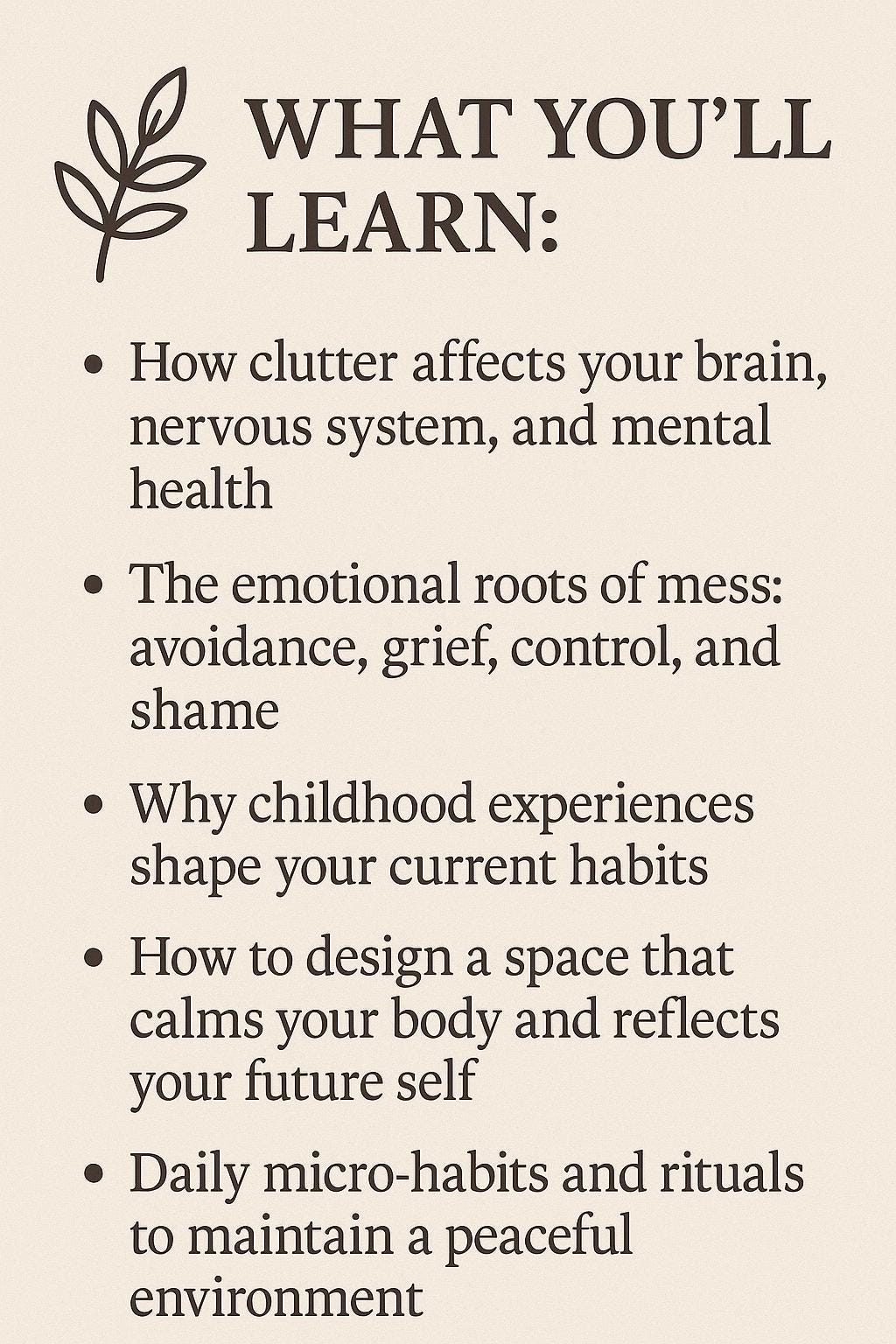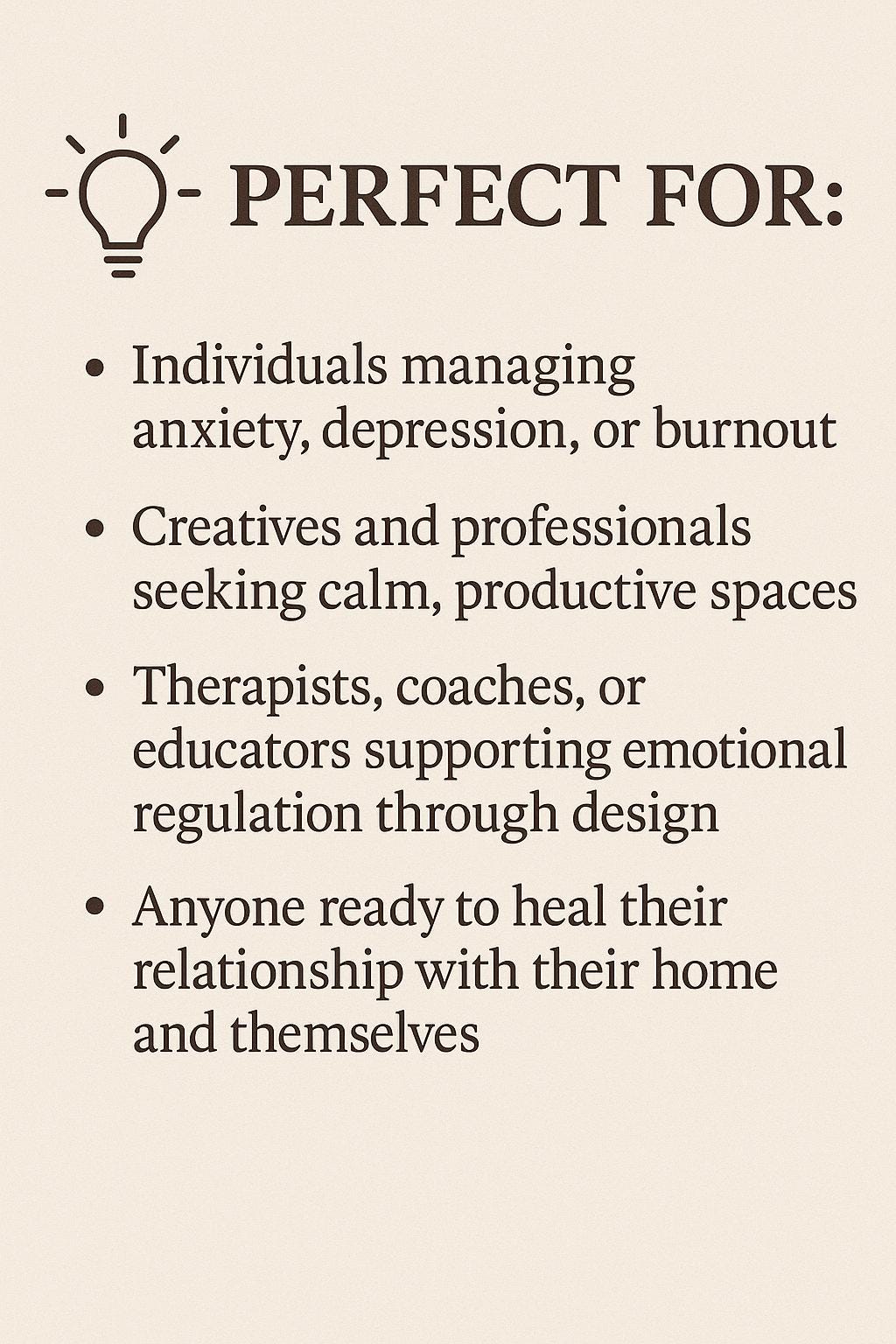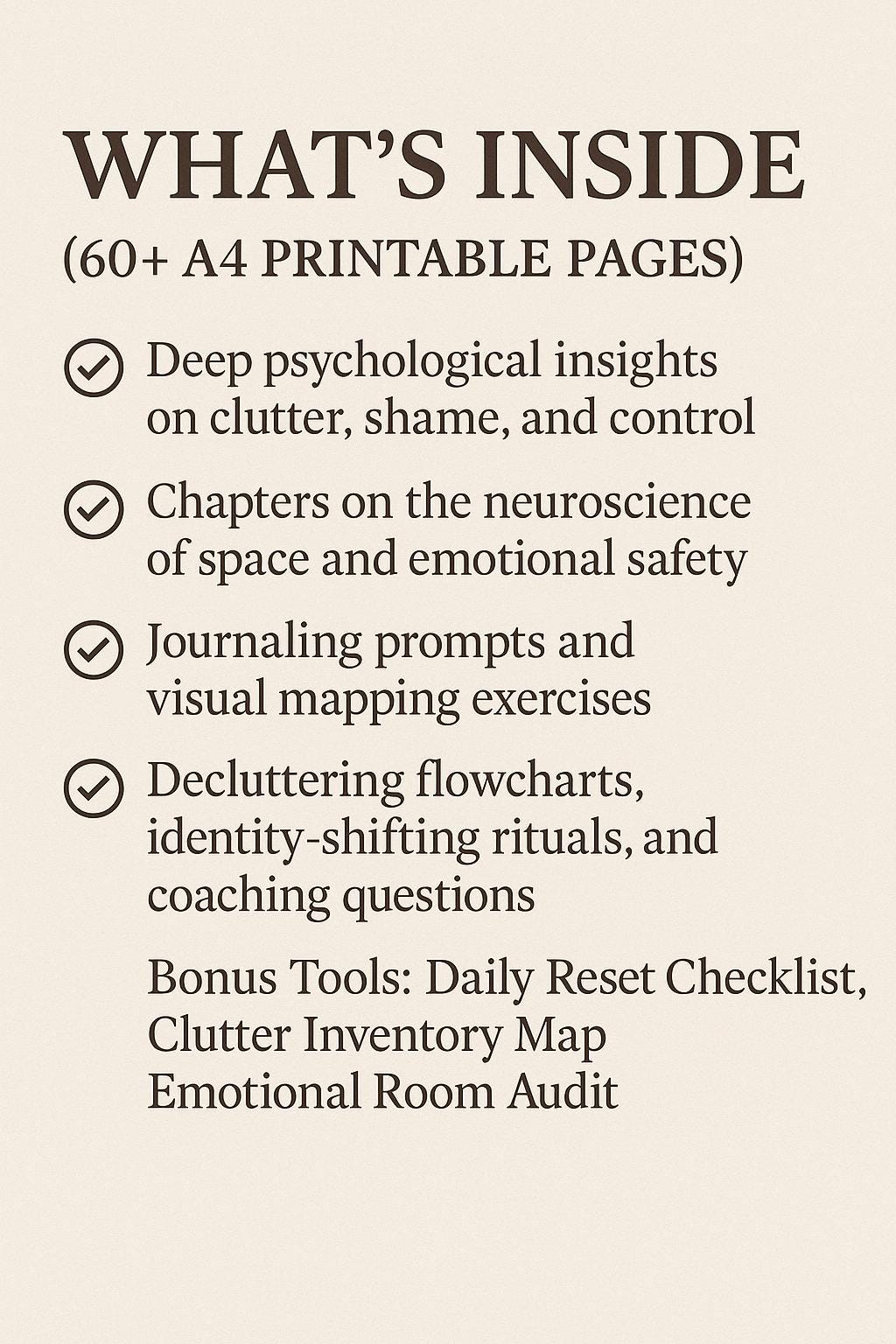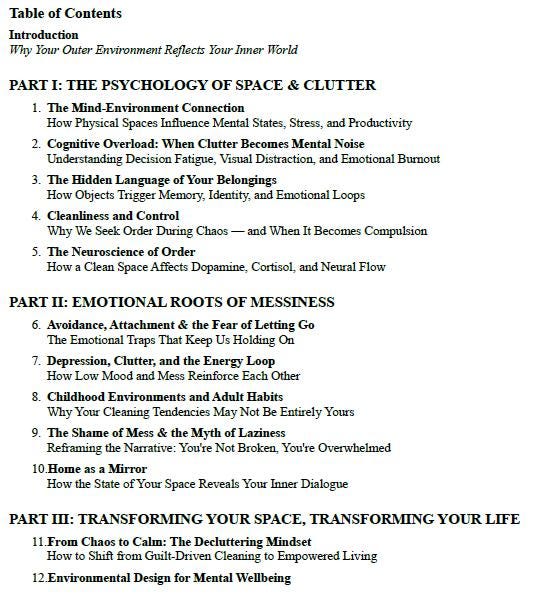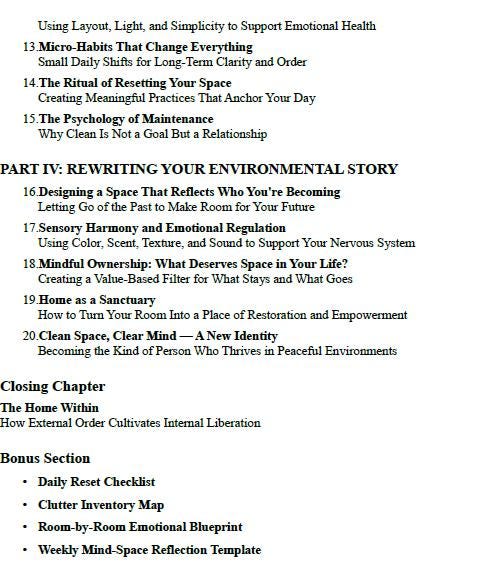1
/
of
10
Mein Shop
The Psychology of a Clean Home – Printable Workbook for Emotional Clarity & Decluttering Transformation (60+ Pages)
The Psychology of a Clean Home – Printable Workbook for Emotional Clarity & Decluttering Transformation (60+ Pages)
Regular price
€21,95 EUR
Regular price
Sale price
€21,95 EUR
Taxes included.
Shipping calculated at checkout.
Quantity
Couldn't load pickup availability
Clear Space, Clear Mind.
This is not just a cleaning guide — it's a science-backed emotional journey through the psychology of your space.
“The Psychology of a Clean Home” is a printable workbook (60+ beautifully designed A4 pages) that blends neuroscience, emotional intelligence, and coaching tools to help you transform clutter into clarity and create a sanctuary that supports your mind, mood, and well-being.
If you’ve ever felt overwhelmed by your surroundings, stuck in mess, or ashamed of your space — this workbook is your compassionate roadmap out.
What You’ll Learn:
• How clutter affects your brain, nervous system, and mental health
• The emotional roots of mess: avoidance, grief, control, and shame
• Why childhood experiences shape your current habits
• How to design a space that calms your body and reflects your future self
• Daily micro-habits and rituals to maintain a peaceful environment
Perfect For:
• Individuals managing anxiety, depression, or burnout
• Creatives and professionals seeking calm, productive spaces
• Therapists, coaches, or educators supporting emotional regulation through design
• Anyone ready to heal their relationship with their home and themselves
What’s Inside (60+ A4 Printable Pages):
✔️ Deep psychological insights on clutter, shame, and control
✔️ Chapters on the neuroscience of space and emotional safety
✔️ Journaling prompts and visual mapping exercises
✔️ Decluttering flowcharts, identity-shifting rituals, and coaching questions
✔️ Bonus Tools: Daily Reset Checklist, Clutter Inventory Map, Emotional Room Audit
Why It’s Different:
Unlike standard cleaning guides, this workbook dives deep into the emotional and psychological layers of why your space looks the way it does — and how to gently transform it without guilt, pressure, or perfectionism.
Share
